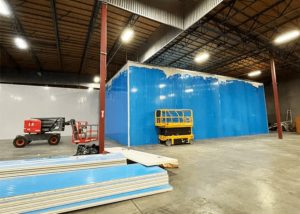High-Quality Cold Room Panel Dimensions for Optimal Performance and Efficiency
High-Quality Cold Room Panel Sizes A Comprehensive Guide
In today's modern world, the demand for cold storage solutions has skyrocketed, largely driven by the food and pharmaceutical industries. The efficiency of these storage systems largely depends on the quality of the cold room panels used in their construction. Understanding the sizes, materials, and specifications of high-quality cold room panels is essential for building an effective cold storage facility.
Importance of Cold Room Panels
Cold room panels play a critical role in maintaining the desired temperature within a refrigeration unit. They provide insulation, ensuring that external temperatures do not compromise the stored products' integrity. High-quality panels are designed to minimize thermal bridging, which can lead to energy loss and increased operational costs. Users need to choose panels that not only meet their temperature control needs but also adhere to safety and energy efficiency standards.
Common Sizes and Dimensions
Cold room panels come in several standard sizes, allowing for a degree of customization based on specific requirements. Typically, the thickness of cold room panels can range from 50mm to 200mm. Thicker panels generally provide better insulation but may also increase initial costs and the overall weight of the structure.
Standard panel sizes often include lengths of 1,000mm to 3,600mm and widths of 1,000mm to 1,200mm. However, custom sizes can be manufactured for unique applications, ensuring that every cold room is tailored to its specific use case. When selecting panel sizes, it's crucial to consider the overall design of the cold storage space, including height, width, and layout.
high quality cold room panel sizes

Materials Used in Cold Room Panels
The most commonly used materials for cold room panels are polyurethane and polystyrene, known for their excellent thermal insulation properties. Polyurethane panels offer higher R-values, which denote the thermal resistance of the material. Stainless steel, aluminum, or galvanized steel are often used as external faces for added durability and resistance to corrosion.
For applications requiring stringent hygiene controls, such as in the pharmaceutical and food sectors, panels with stainless steel finishes are preferred. These are easier to clean and maintain, reducing the risk of contamination.
Considerations for Selection
When selecting high-quality cold room panels, several factors need to be evaluated. First, assess the specific temperature requirements for the products being stored. Next, consider the energy efficiency of the panels, as this will significantly impact the operational costs over time. Lastly, ensure that the panels meet all local regulations and standards for health and safety.
Conclusion
High-quality cold room panels are imperative for efficient temperature control and energy management in cold storage facilities. Understanding sizes, material choices, and key specifications will help owners effectively manage their cold storage solutions. By investing in the right panels, businesses can enhance operational efficiency, reduce energy costs, and ensure the safety and quality of their products. Whether for commercial, industrial, or residential applications, the proper selection and installation of cold room panels are vital for success in today’s competitive market.
















































































































